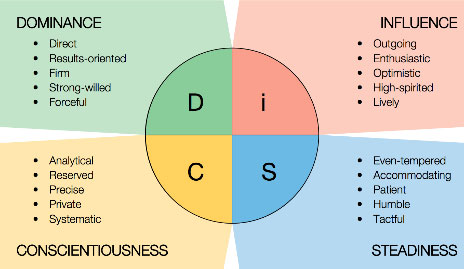In this 2-part blog series, we discuss the similarities and differences between our experiences with middle school and professional populations as it relates to the effect that their work environments have on work productivity, happiness and overall success.
A bit of background…
Our organization is focused on personal development, leadership training, conflict resolution and team building. We serve a population of individuals with 5th graders on one end of the spectrum and executives of Fortune 100 corporations, and internationally recognized not-for-profits and NGO’s, on the other.
Let me just summarize by saying that on many days we cannot tell which end of the spectrum we are on. That is to say that people, regardless of age and experience, have similar reactions to certain situations and stimuli. The big difference is cynicism; 5th graders generally don’t have it yet, and as such, seem to perform better in teams, react less negatively to failure, and generally have fun with challenges.
The good news is that the energy, optimism, authenticity and creativity of a 5th grader are still characteristics of most adults. Sometimes we just have to work harder to bring them back to the surface. There is one constant among the entire population though; they are all affected by their environments, both negatively and positively.
Taking Action in Schools and Professional Organizations
While the types of specific challenges and objectives vary, the general principles of positive work environments, and the strategies for establishing them, are similar across all types of organizations.
In education, the administrative teams and teachers have each summer to stop the action, evaluate, and correct course for the next school year. And, by design there is constant turnover at each grade level with new underclassman arriving as current students move up. Of course, professional organizations do not always have this luxury.
Tone Setting at the School District and Senior Management Levels
Our programming for schools often starts at the district level with supervisors and their staff. The culture adopted here sets the example for the the school teams in the district. Most often, the group will start with a workshop focused on communication that includes a workstyle assessment like DiSC® to help individuals understand the way they and their colleagues “operate”.
Whether including an assessment tool or not, addressing communication barriers and opportunities is always a beneficial step. Most districts follow state guidelines and requirements for school climate, but have leeway for customizing/personalizing their approach for their schools. Once a plan is established, it must be clearly communicated and embraced by the schools’ administrators and faculty. Most important of all, it must be activated.
Just as school district leaders are charged with setting the tone for school climate, so must senior managers collaborate to establish the personality and culture of their businesses. Many times, the biggest challenge in both corporations and not-for-profits, is getting everyone on the same page.
A colleague of mine and I worked directly with the CEO of a large multinational manufacturing company. Our directive was to help division heads talk to each other and share more information. The workshop we facilitated preceded quarterly meetings during which this group, developed the overall HR strategy, among other things.
As with groups of professionals at this level, individuals are not only exceptionally smart and accomplished, but are oftentimes so myopically focused on their specific roles at the division level, that participating in discussion and initiatives at the parent organization level is very difficult.
Our workshops and simulations for this group focused on communication, information sharing, best practices identification and the leverage of team work. Perhaps the most important outcome of these sessions was the renewed familiarity of the participants and the increased comfort they exhibited with working together in teams.
Getting School Level Personnel and Middle Managers Onboard
As always, the process starts at the top with a commitment to transforming schools into safer, more productive communities. Principals and heads of school are challenged to foster a culture of collaboration and shared leadership among administrators, teachers and parents. It is no surprise that this is harder to do than it sounds with everything else that needs to happen at a school. However, it is so important to create this positive model for students.
During the academic year, children spend more of their waking hours with adults at, and associated with school, than they do with any other adults. For principals, the first step is to promote and embrace a sense of belonging among other administrators and teachers. These are the adults who will have the most influence on students during the school day and are important role models for student behavior and interaction.

Like any other group of professionals, school administrators and teachers, need support and a positive work environment. So, we start with a professional development day
focused on open and direct communication, collaboration, and tone setting. During these workshops, we share strategies and techniques with administrators relating to challenges in the classroom like conflict resolution, team building, and “crowd control”.
Interestingly, most of our workshops with middle managers include many of the same strategies, tactics and dialogues. One of our clients recently completed an employee feedback survey with managers. The results were fascinating, mostly because feedback and ratings in some areas did not correlate well with those in others.
For example, managers rated (on a 5 scale with 5 being very satisfied) “Competitiveness of compensation” (4.5), and “Value of employee health benefits” (4.2). However, they gave relatively low ratings for “Feel empowered to affect meaningful change” (2.7). “Have the information and tools you need to manage your direct reports” (2.5), and “Comfortable with career path” (2.2).
The challenge was gathering more specific feedback to better understand key issues. However, when interviewed on an individual basis, managers were reluctant to share feedback. Senior HR management needed more information to begin to address the specific drivers of this feedback. Our workshop with this group started with activities and discussion focused on breaking down communication barriers and creating a safe environment in which to share feedback.
It was only after we got people sharing information and ideas, that the team could focus on tone setting and a discussion of workplace climate. Including these middle managers in the discussion of workplace climate was an important step along the path of identifying ways to adjust certain policies, communication protocols, and management training plans.
In our next blog post, we’ll discuss the process we use to foster a positive climate for both middle schoolers and professional groups.



















